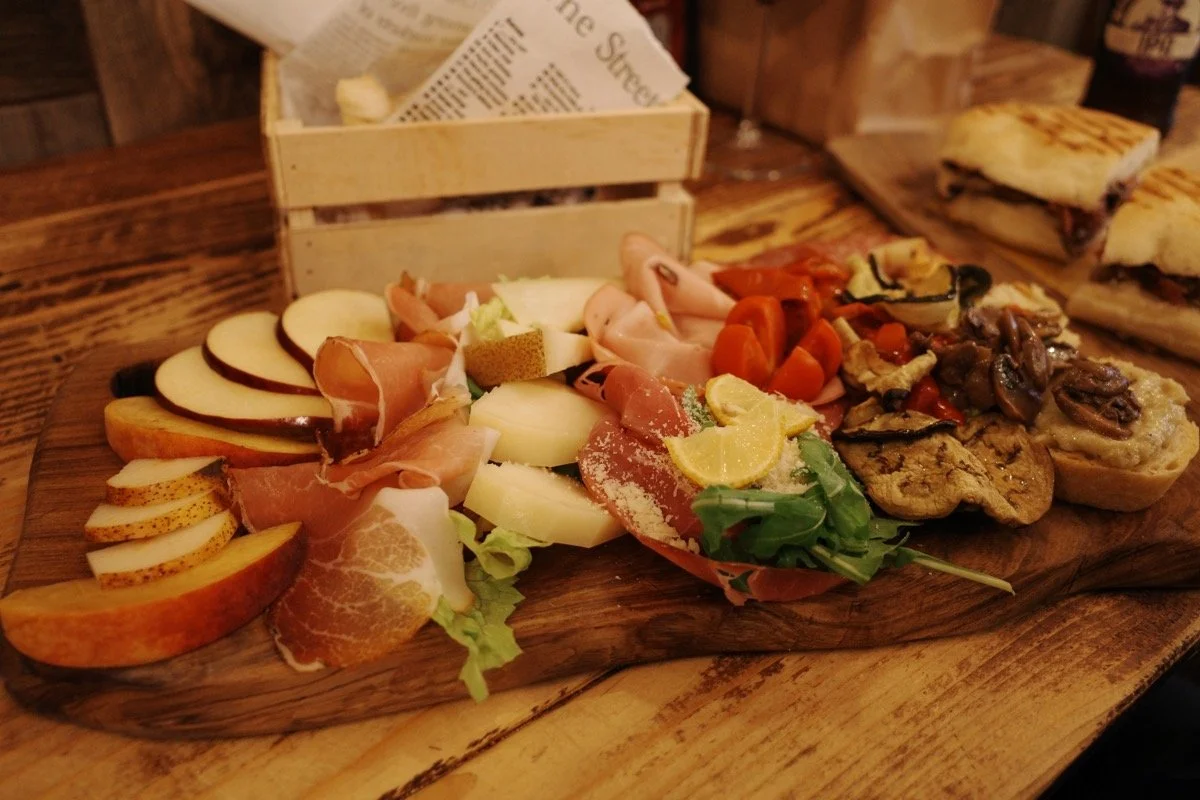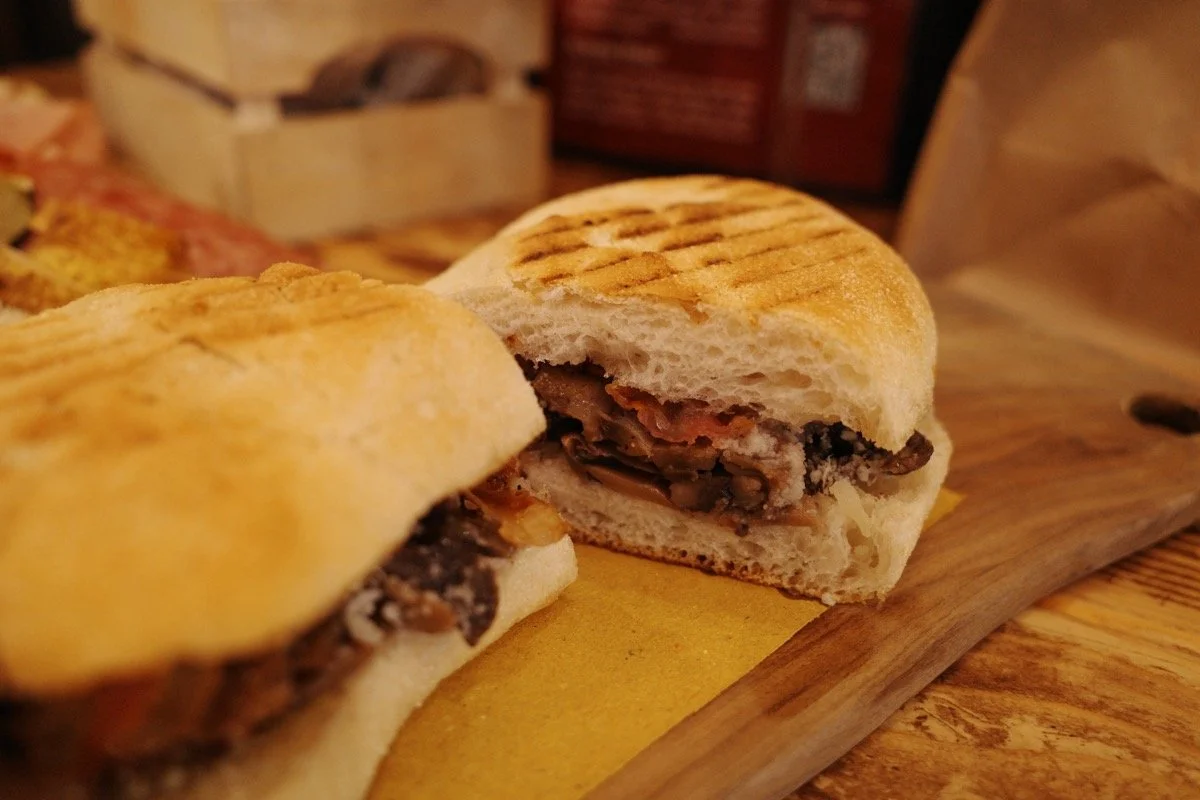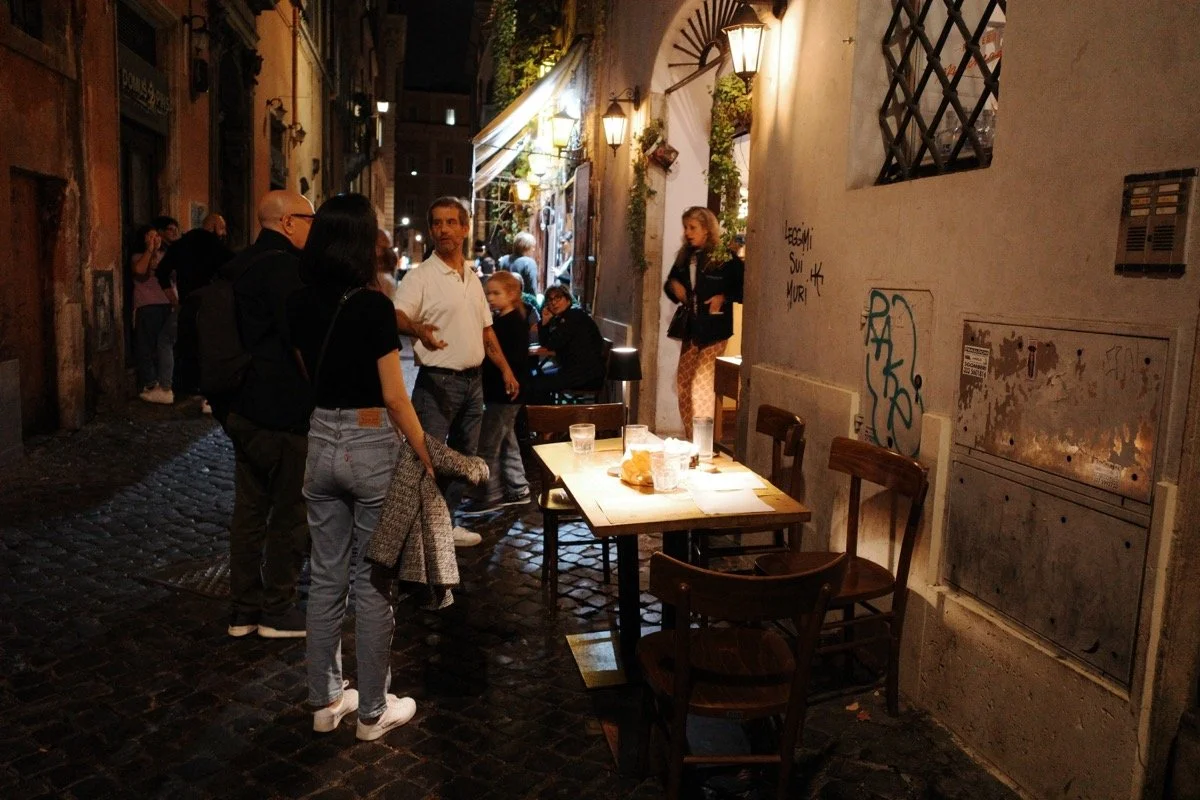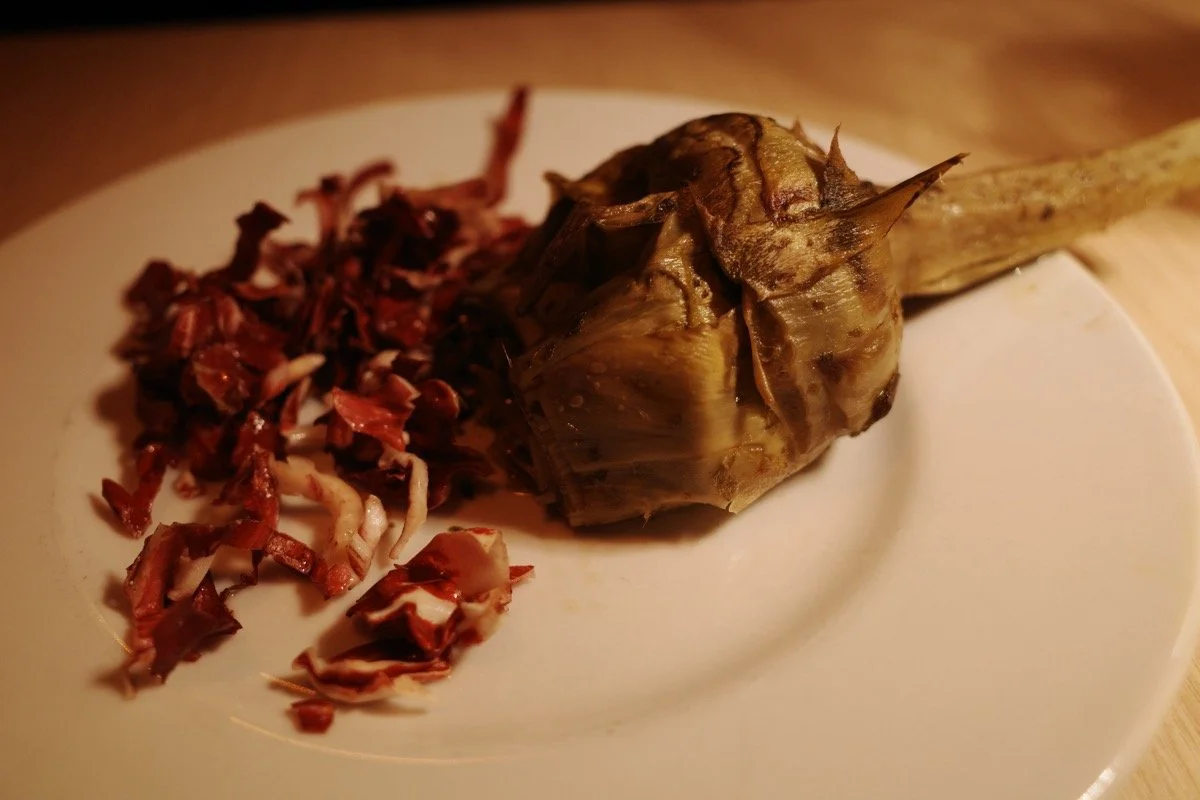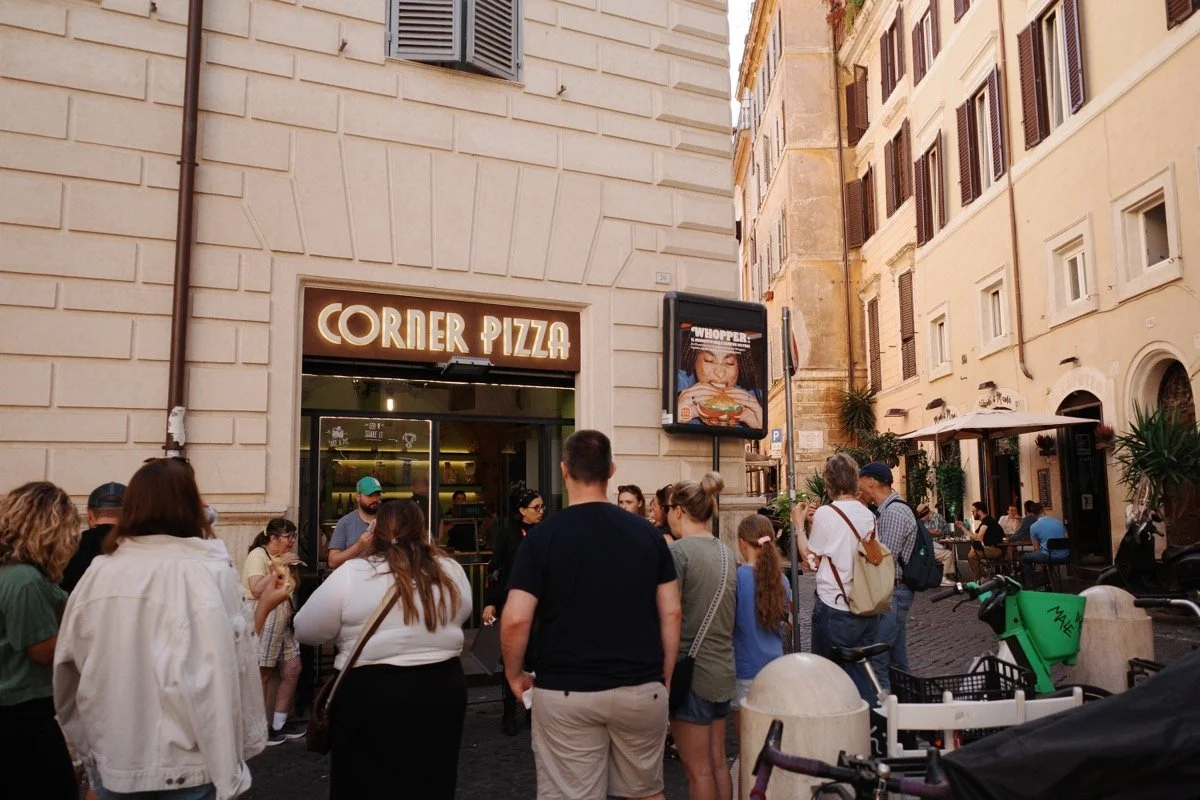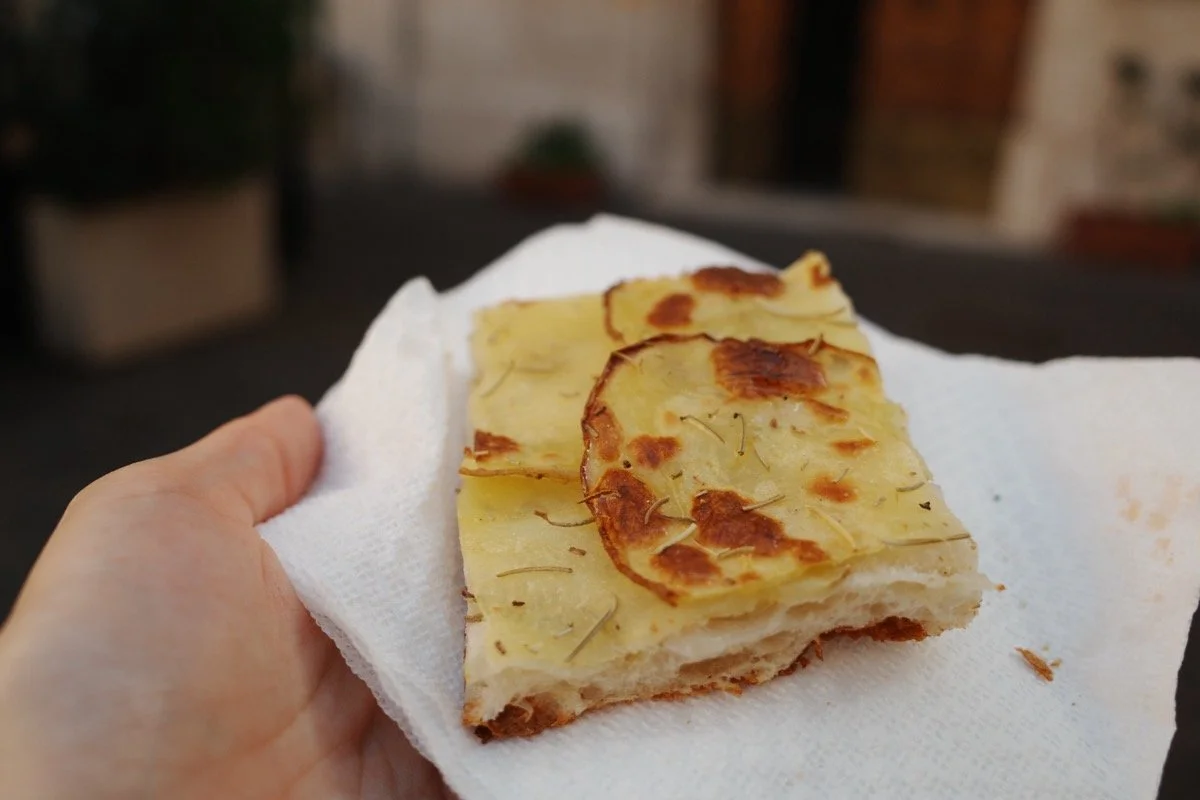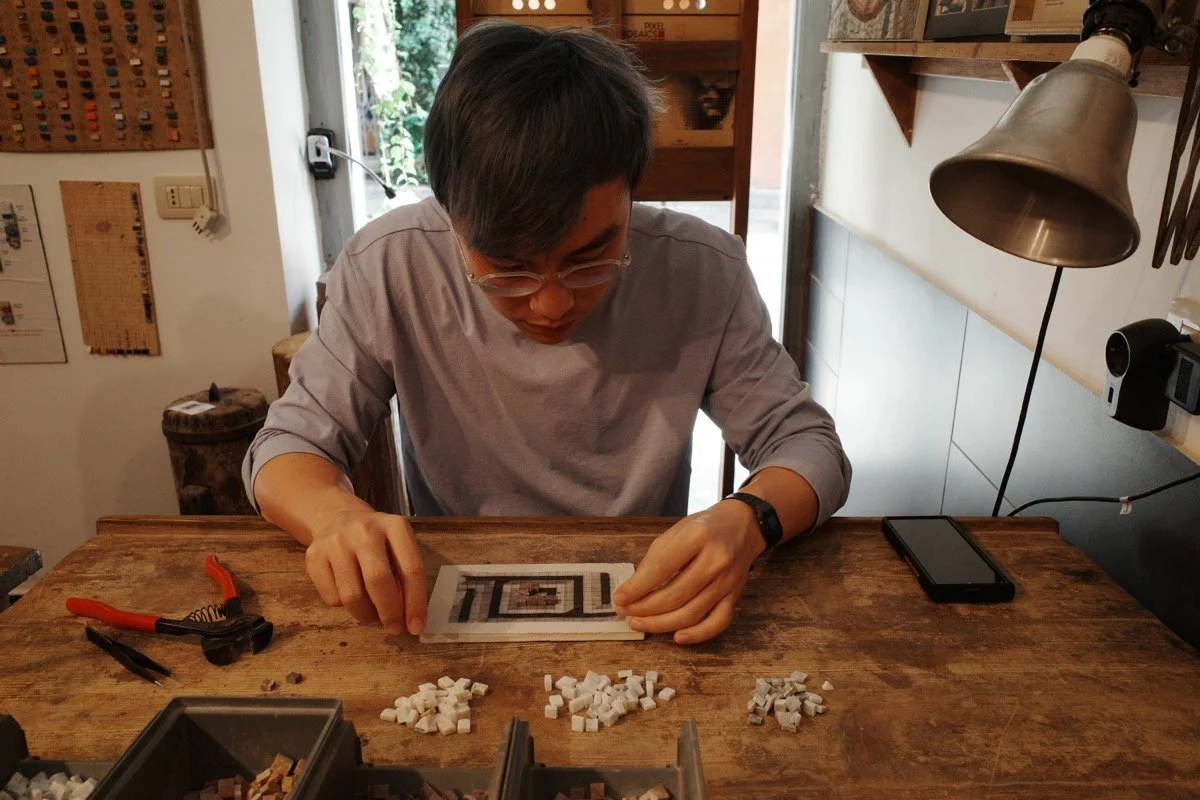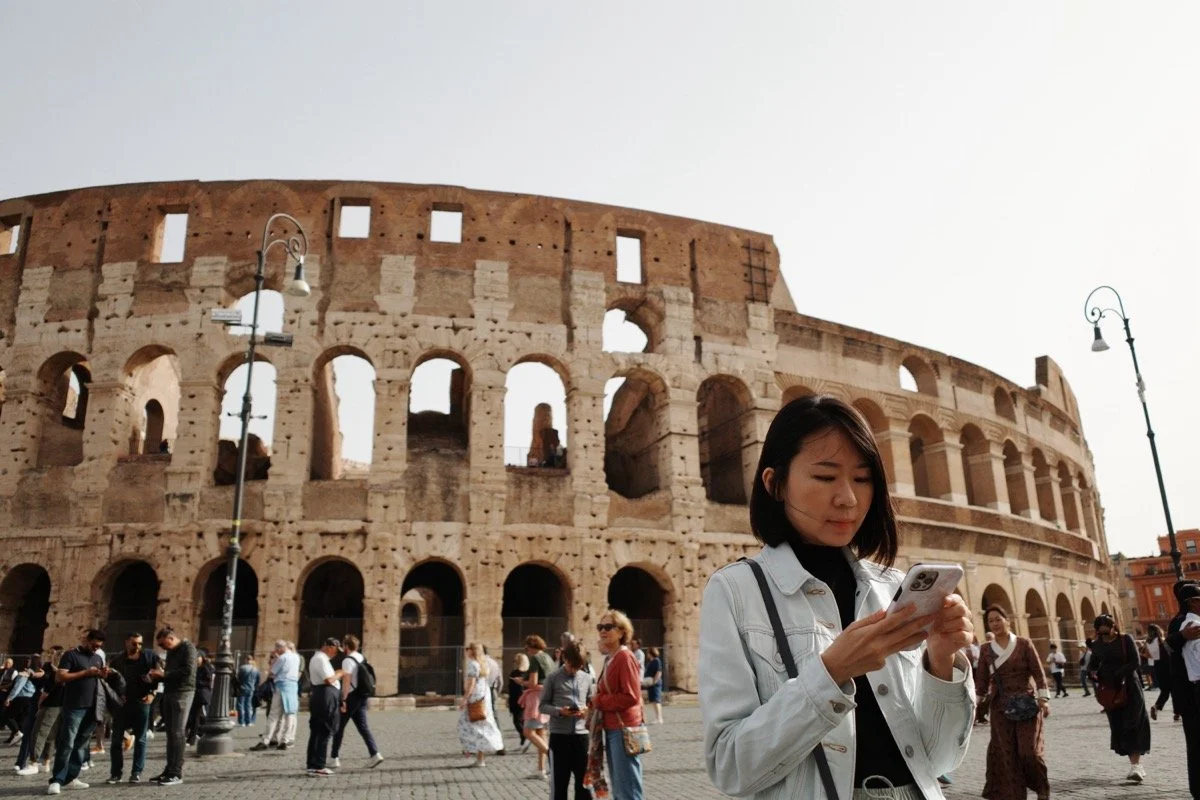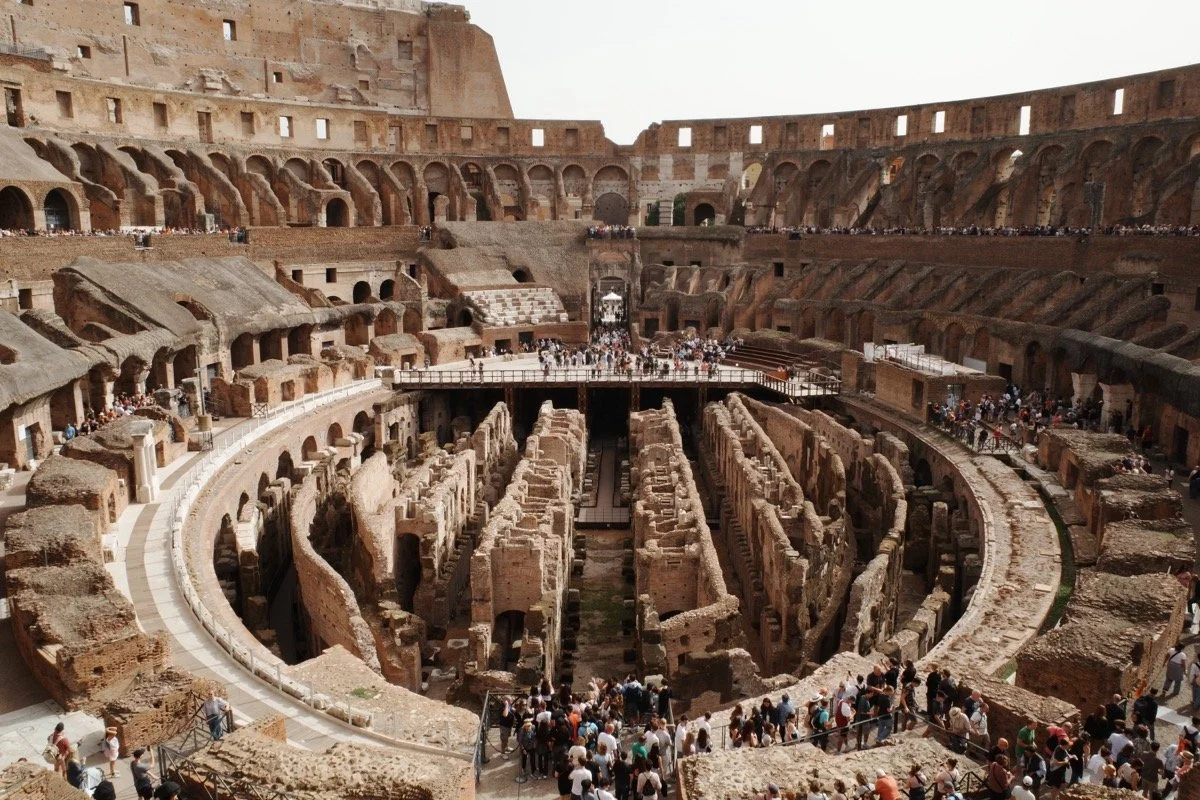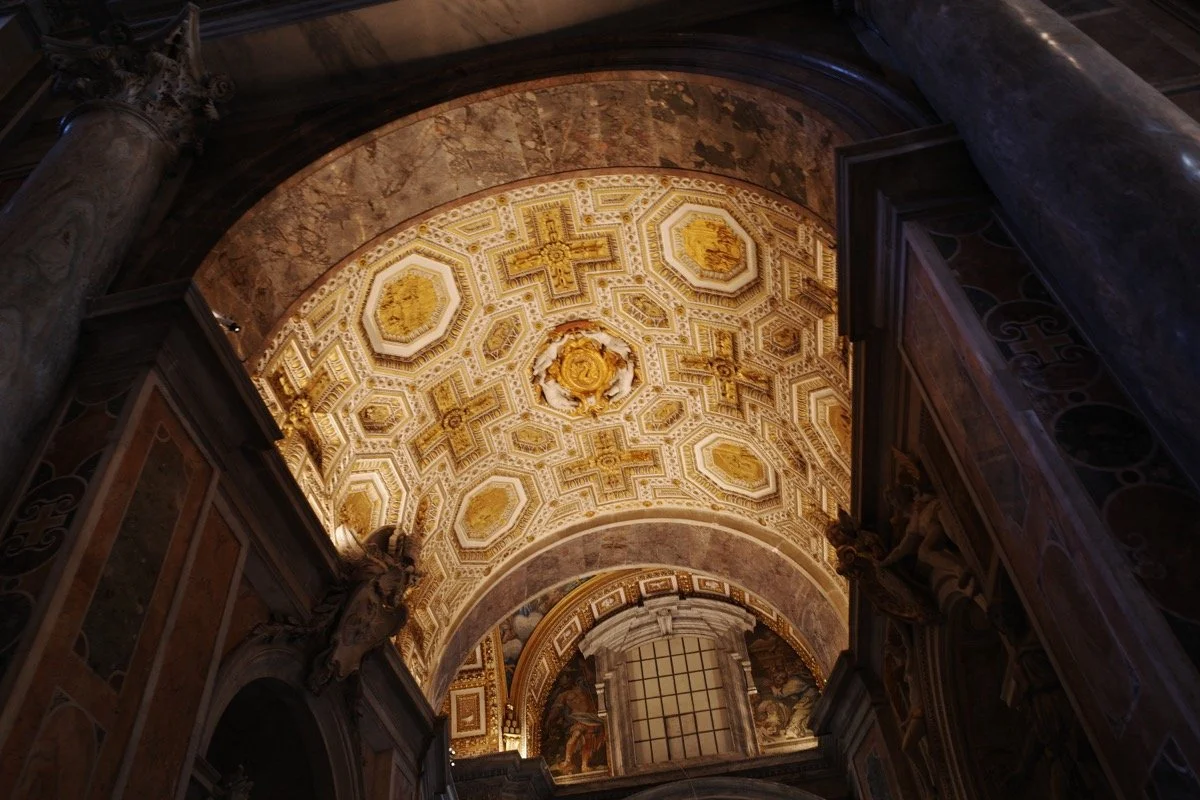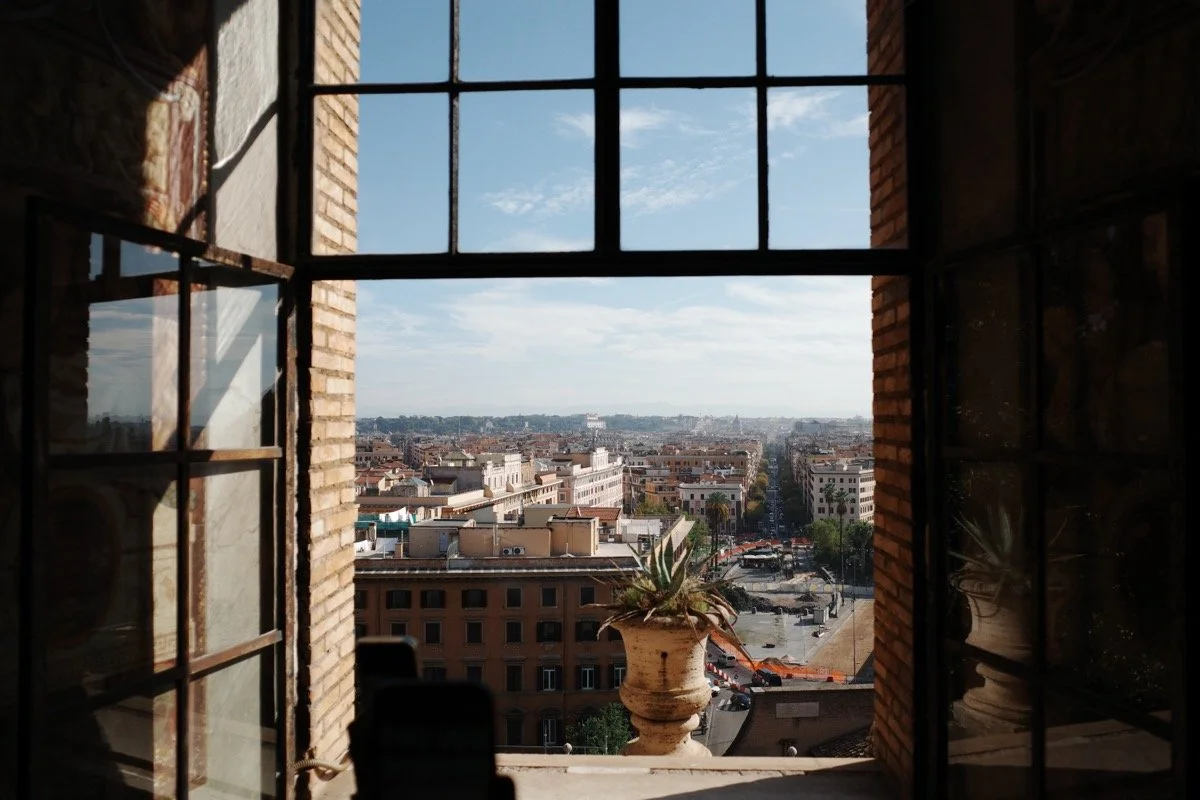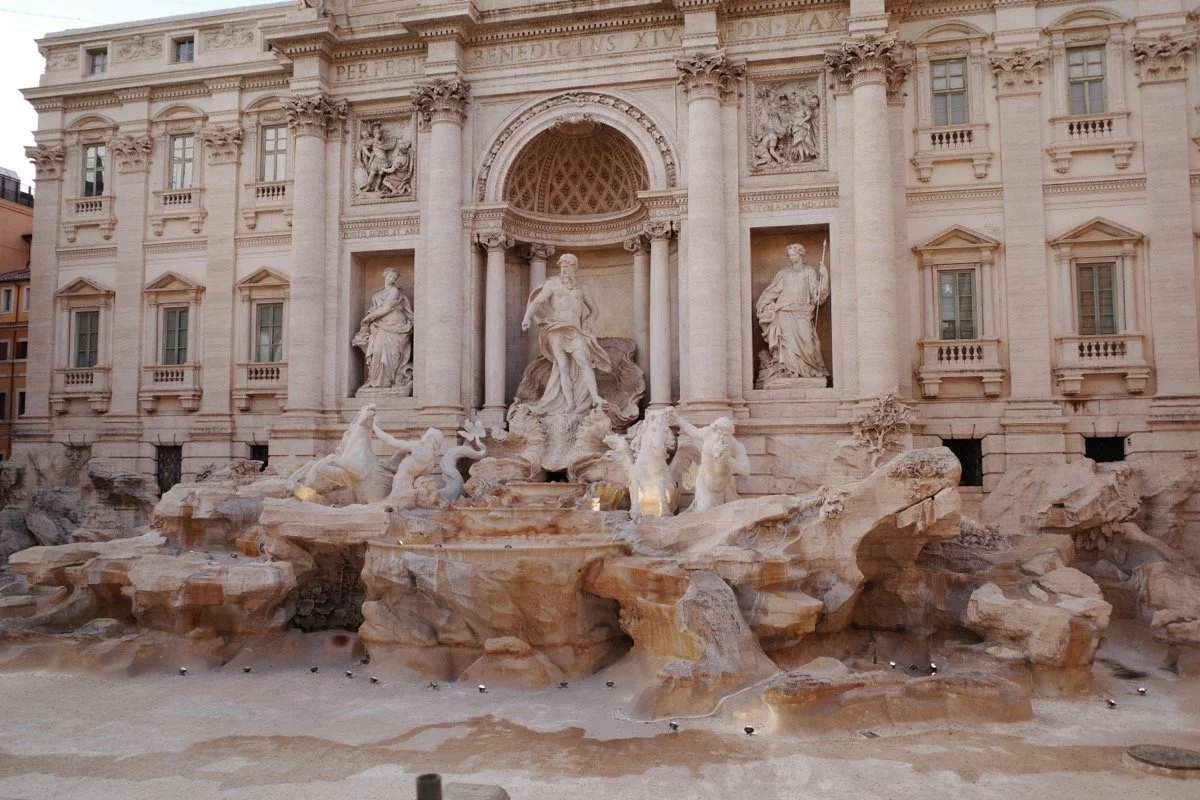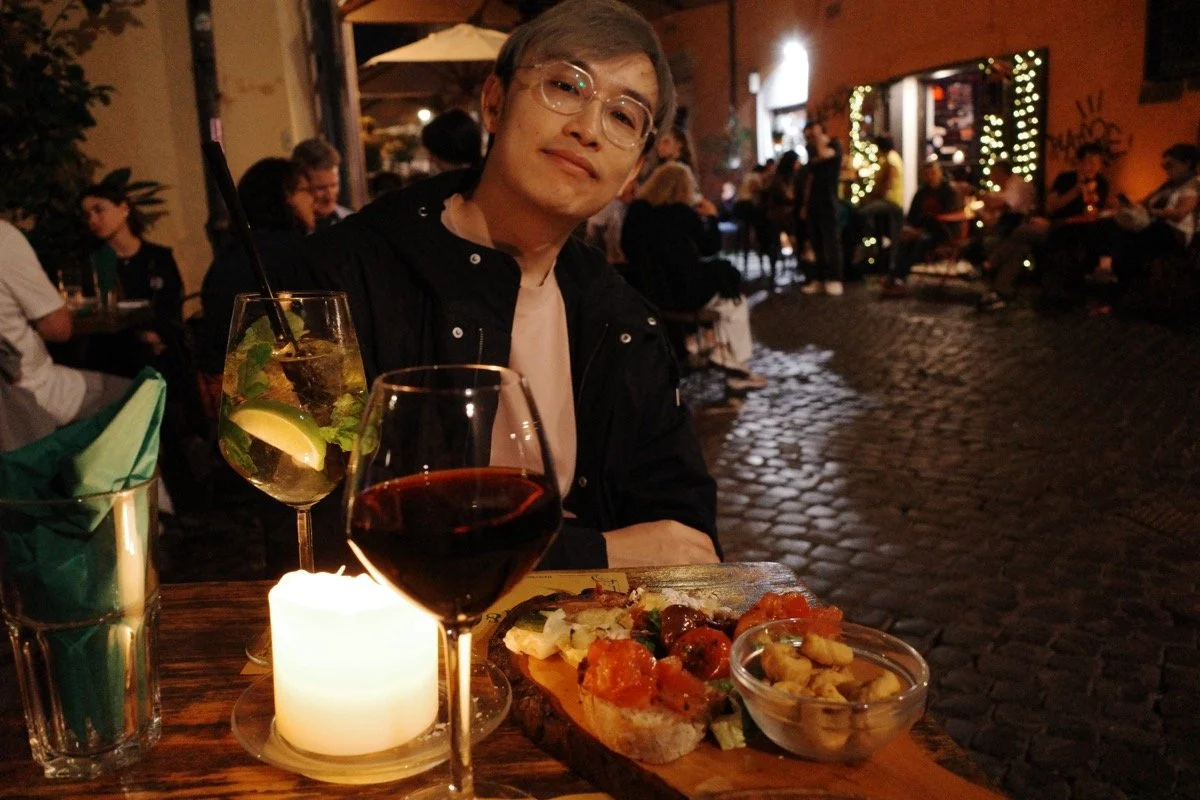Things to Do in Rome: Our Favourite Eats, Stays & Experiences
Italy has always held a special place in my heart — I did my university exchange in Milan, and ever since then, I’ve fallen in love. The food, the people (so passionate and warm), the language, the landscapes, the art… there’s just something about Italy. So when it came time for our belated honeymoon, I knew I had to bring Alex here to experience it for himself.
Rome was both the first and last stop on our trip — a city bursting with history, grandeur, and charm. Yes, it’s a little chaotic and packed with tourists, but it also sweeps you up in its energy, its beauty, and those everyday surprises tucked down quiet alleyways.
This isn’t meant to be an exhaustive “Top 100 Things to Do in Rome” list — it’s just a heartfelt collection of our favourite eats, experiences, and discoveries from our time in the Eternal City. Think of it as travel notes passed between friends.
How to Use This Guide
This guide is split into easy sections so you can jump to whatever you’re planning — food, sights, day trips, or even where to stay.
Here’s what you’ll find:
Where to Eat – Our favourite local restaurants near key sights (plus what we ordered)
Must-Visit Sights – With honest notes on what’s worth your time (and what we’d do differently)
Hidden Gems & Experiences – From mosaic-making to a quick photoshoot, these were the unexpected highlights of our trip
Where We Stayed – Honest reviews and tips for both accommodations
FAQs – Getting around, local quirks, and what we learnt the hard way (so you don’t have to!).
Feel free to pick and choose what suits your trip — and I hope these notes help you see the best of Rome your way.
Where to Eat: Our Favourite Restaurants in Rome
These are the spots we loved so much we still talk about them. Perfect for mixing iconic Roman flavours with a dash of local charm — and all easily slotted into your sightseeing plans.
Fuorinorma
📍 Via dei Serpenti, 178, 00184 Roma RM, Italy
Tucked away in the Monti neighbourhood (just a short walk from the Colosseum), Fuorinorma quickly became one of our favourite casual bites in Rome. Their panini and taglieri (Italian cured meat and cheese platters) are top-tier — rustic, generous, and deeply satisfying.
We came back twice for their panini — our favourite was the Gricia ai Funghi, loaded with flavour and served on the softest bread ever. Pair your sandwich with a craft beer or a glass of wine for a very happy lunch.
Tip: Combine this with your Colosseum visit — it’s just around the corner!
Trattoria Cadorna
📍 Via Raffaele Cadorna, 12, 00187 Roma RM, Italy
This was hands-down our favourite restaurant in Rome. It’s one of those no-frills, honest Roman trattorias that’s been around since 1947 — and it shows in the best way.
It came recommended by a good friend who’s a Rome regular, and now we get why. The carbonara here is the stuff of dreams — creamy, rich, and perfectly balanced. I genuinely almost licked the plate clean. The lamb chops were great too!
Maccheroni
📍 Piazza delle Coppelle, 44, 00186 Roma RM, Italy
Located between the Pantheon and Piazza Navona, Maccheroni is a classic spot with a cosy atmosphere and a lively crowd. Our Roman friend brought us here for dinner — and it hit the spot.
Expect traditional Roman flavours, and that warm hum of Italian conversations around you. It's ideal for a sit-down dinner after a day of exploring the historic centre.
Experiences We Enjoyed in Rome
If you’ve got some time between sightseeing and eating your weight in carbonara, here are a few experiences we tried and loved — all bookable via Airbnb Experiences.
Rome Street Food Tour
We signed up for the morning tour and it was a great call — it includes a visit to Campo De' Fiori, a lively outdoor market that gives you a glimpse into everyday Roman life. One of my favourite parts? Sampling olive oils and cheeses at a local stall while learning about the regional differences — simple, generous, and so delicious.
Go hungry because there’s a lot of food to enjoy. We tried:
Panini with freshly sliced porchetta
Supplì — crispy Roman rice croquettes with gooey mozzarella centres
Pizza al taglio (pizza by the slice, Roman-style)
Gelato to round off the tour
The guide was super friendly and shared loads of local food stories that made it more than just a tasting — it felt like wandering around with a Roman foodie friend. Definitely recommend this if you want to eat well and learn a little along the way.
Tip: The market closes by early afternoon, so opt for the morning slot if you want the full experience!
Supplì — crispy Roman rice croquettes with gooey mozzarella centres
Mosaic-Making Workshop at Studio Cassio
I'm a craft girlie at heart, so of course I had to sign up for a mosaic-making workshop — and it was such a fulfilling way to spend the afternoon.
If you love working with your hands or just want a creative break from sightseeing, this one's worth checking out. It's hosted at Studio Cassio, a family-run studio known for preserving the traditional art of mosaics. You’ll learn real techniques used in ancient Roman and Byzantine mosaics, and make your own piece to bring home — such a lovely keepsake from the trip.
It’s not a quick drop-in — expect to spend about 3 hours, so I recommend blocking off a good half-day and pairing it with a nice lunch nearby.
Before the session, we strolled around the charming neighbourhood and had delicious pizza at Trieste Pizza Roma, just down the street. The whole experience was calm, creative, and such a sweet change of pace from the usual tourist trail.
Quick 30-Minute Couple Photoshoot Near the Colosseum
I always find it hard to get nice couple photos while travelling — we usually end up with unglam wefies or solo shots of my partner.
I’m so glad I booked this quick photoshoot — Stan our photographer was super friendly and gave us just enough guidance without making us feel too posed. The Colosseum made an epic backdrop, and the photos turned out so lovely. A great way to document memories from the trip without fuss!
Where We Stayed in Rome
We started and ended our Italy trip in Rome and stayed in two different accommodations — both of which we really enjoyed!
Note: Italy charges a city tax for accommodations (usually around €10–15 per night), and many places only accept it in cash — so bring enough small notes for this.
Design 18 Charming Rooms
📍 Via Muzio Clementi 18, Rome
This spot is slightly outside the city centre, but we enjoyed the walk — it was quiet, safe, and still within easy reach of everything. What we really appreciated was the convenience of a direct airport shuttle bus just 6–8 minutes away. We actually used this on our first day because of a train strike, and it ended up being much easier than expected!
Shuttle bus: €7 one way
Stop: Roma Vaticano – Via Crescenzio (6–8 min walk from the accommodation)
Ale & Niki's Home
📍 Viale Giulio Cesare 78, Rome
For the second leg of our trip, we chose to stay closer to Vatican City, and this was a great pick — it allowed us to walk straight to the Vatican Museums without having to rely on public transport (especially useful with how common strikes can be).
The staff were lovely and helped us arrange an airport transfer by taxi, which we’d definitely recommend if you have heavy luggage or early flights — metro stations in Rome often have a lot of stairs.
Flat-rate taxi to airport: €50 (can be arranged through the accommodation)
Must-Visits in Rome
Here are a few iconic stops from our trip — some we explored in-depth, others we walked past but still found memorable. If it’s your first time in Rome, these are classics for good reason.
Colosseum
We really enjoyed this guided tour we found on Airbnb — highly recommend it! You get to skip the long queues, and the guide helped bring the ruins to life with stories of gladiators, emperors, and public spectacles. The Colosseum is one of the New 7 Wonders of the World, and it truly feels awe-inspiring when you’re standing inside.
Tip: Pair this visit with a stop at Fuorinorma, our favourite panini spot nearby.
Vatican City
We booked a guided walking tour of Vatican City — and while it was super helpful for skipping the very long queues and understanding what we were seeing, it came with pros and cons.
We found our tour on Airbnb and genuinely enjoyed it — highly recommended if you want skip-the-line access and a guide who can share loads of fascinating facts you wouldn’t get on your own. Our guide was incredibly knowledgeable and brought each stop to life with stories and context.
One of my favourite parts? The Gallery of Maps in the Vatican Museums — a long, ornate corridor lined with 16th-century hand-painted maps of Italy. It was breathtaking, and I wasn’t expecting to love it so much.
That said, the downside of a group tour is that we couldn’t linger at the spots we loved most. The whole experience lasted just over 3 hours, and by the end, we were starving — we definitely underestimated how long we'd be walking!
Tip: If you love history and art, the guided tour is well worth it. But if you prefer to take things slow, consider pre-booking a timed-entry ticket and exploring on your own with an audio guide.
Pantheon
We walked past the Pantheon so many times — and honestly? We regret not going in. Every local we spoke to said it’s one of the most beautiful spaces in Rome, especially the interior with its soaring dome and the open oculus that lets sunlight stream through.
Entry now requires a ticket (about €5), and it’s best to go early or book online to avoid the crowds.
So… I guess this just means we have to come back to Rome, right?
Trevi Fountain
The Trevi Fountain is one of Rome’s most iconic landmarks — but unfortunately, it was under restoration when we visited (in preparation for Jubilee 2025), so we didn’t get to see it in its full glory. That said, it’s still worth swinging by, especially once it’s reopened. Normally, you’ll find crowds gathered here day and night to admire the fountain and take part in a charming Roman tradition.
The Meaning Behind Each Coin Toss
Legend has it that tossing coins into the Trevi Fountain can bring good fortune — but there’s actually a specific meaning depending on how many you toss:
One coin – Ensures you’ll return to Rome.
Two coins – Brings a new romance into your life.
Three coins – Leads to marriage (or deepens your current relationship).
To do it properly, stand with your back to the fountain and toss the coin(s) with your right hand over your left shoulder.
Oh — and it’s not just about luck. Over €1 million in coins are collected from the fountain each year, and the money goes to charity. So your wish also helps someone else.
Church of St. Ignatius of Loyola
We popped into this lesser-known Baroque church near the Pantheon during our walking tour — and we were amused (and impressed) by the fake dome.
Instead of building a real dome (as originally planned), the church ran out of money during construction. So they turned to art: Andrea Pozzo, a Jesuit brother and master of perspective, painted a spectacular trompe-l'œil (trick of the eye) fresco that gives the illusion of a soaring dome. It’s so convincing that we didn’t realise it wasn’t real until we were standing right underneath it.
There’s even a gold marker on the floor to show you exactly where to stand for the full visual effect. It’s clever, stunning, and very Rome.
The rest of the ceiling is just as dramatic, filled with angels, painted architecture, and an epic scene of Saint Ignatius being welcomed into heaven.
It’s free to enter, not overly crowded, and a great little detour if you’re already exploring the Pantheon or Piazza Navona area.
Trastevere
A charming, bohemian neighbourhood on the west bank of the Tiber River. We didn’t spend as much time here as we would’ve liked, but it’s known for its cobblestone streets, lively piazzas, and great local restaurants and bars. It’s a nice area to wander around in the evening — less polished, more lived-in, and full of character.
Is it safe to drink tap water in Rome?
Yes — absolutely! Tap water in Rome is safe, clean, and surprisingly refreshing. The city is home to thousands of charming little fountains called “nasoni” (literally, “big noses”), which continuously flow with cool drinking water from Rome’s ancient aqueducts. You can refill their bottles here all day long — and it's completely free.
We even stumbled across a sparkling water fountain near the Colosseum (yes, really!) and Alex — who loves sparkling water — went a little wild. Definitely one of those small but delightful things about Rome.
📝 Tip: Bring a reusable bottle — it's a great way to stay hydrated as you explore the city without buying plastic bottles each time.
Staying Connected: eSIM for Data
I always opt for an eSIM when I travel—it's super easy to set up and activates as soon as you land.
I used Airalo and had no issues with coverage in Italy.
Plans are affordable and easy to top up if needed.
Use my referral code DAPHNI0645 for USD3 off your first purchase (I’ll get USD3 credits too when you use my code so it’s a win win!)
Currency & Spending: YouTrip Multi-Currency Wallet
We paid for most things using our YouTrip cards, which saved us money on foreign exchange fees.
You can withdraw up to SGD400/month from overseas ATMs with no extra fees.
After that, a 2% withdrawal fee applies.
Some ATMs may charge an additional local fee (usually minimal).
Rome Travel FAQs
-
Rome has two main airports — Fiumicino (FCO) and Ciampino (CIA). Most international travellers arrive at Fiumicino.
From Fiumicino (FCO):
Train: The Leonardo Express runs non-stop from FCO to Roma Termini (the main train station). It takes ~32 minutes and costs about €14.
Bus: Several shuttle buses (like Terravision or SIT) connect FCO to Termini for around €6–7. Takes about 45–60 minutes depending on traffic.
Taxi: A fixed fare of €50 to the city centre (within Aurelian Walls), which includes luggage and passengers.
From Ciampino (CIA):
Bus: No direct train. Buses to Termini cost ~€6 and take about 45–60 minutes.
Taxi: Fixed fare of €31 to the city centre.
Tip: If there’s a train or taxi strike, shuttle buses are a good backup option.
-
3 to 4 full days is a comfortable amount of time to see Rome’s major sights, enjoy a few local experiences, and not feel rushed. That gives you space for:
Day 1: Ancient Rome (Colosseum, Roman Forum, etc.)
Day 2: Vatican Museums & St. Peter’s Basilica
Day 3: Pantheon, Trevi Fountain, Spanish Steps, Trastevere
Day 4: Optional – day trip, workshop, or slower explorations
If you’re tight on time, 2 days can cover the essentials — but you’ll need to prioritise.
-
Train: The fastest and easiest option. High-speed trains (Trenitalia or Italo) take about 1.5 hours from Roma Termini to Firenze Santa Maria Novella. Trains run frequently and tickets range from €20–50 depending on how early you book.
Driving: Not recommended unless you're planning stops in Tuscany — it takes ~3.5 hours and parking in Florence can be tricky.
-
Train: High-speed trains (Trenitalia or Italo) take just over an hour from Roma Termini to Napoli Centrale. It’s fast, comfortable, and very convenient.
Bus: A budget-friendly but slower option (2.5–3 hours).
Driving: ~2–2.5 hours by car, but not ideal due to traffic and ZTL zones in both cities.
-
There’s no direct train from Rome to Pompeii, but it’s easy with a transfer:
Take a high-speed train from Rome to Naples (~1h10min)
Then transfer to the Circumvesuviana train from Napoli Garibaldi to Pompei Scavi (~35 minutes)
Allow ~2.5 hours in total. Alternatively, there are day tours from Rome that include transportation and a guide.
Tip: If Pompeii is a priority for you, consider spending a night in Naples or Sorrento and doing a dedicated day trip from there — it gives you more time at the ruins.
-
You can buy train tickets in Italy in a few ways:
Online – through official websites like Trenitalia or Italo.
Via App – Both Trenitalia and Italo have apps that let you purchase and store tickets on your phone.
At the Station – There are self-service kiosks and ticket counters at most stations. The machines have English options and are generally easy to use.
Tip: The fast trains (Frecciarossa, Italo) often have cheaper prices if booked earlier, while regional train prices don’t usually change.
-
We tried both Italo and Trenitalia’s Frecciarossa trains on our trip — and honestly, they were both great. Clean, fast, and way more comfortable than flying.
So… which one should you pick?
Our honest answer:
It really comes down to your preferred timing and price point. Both services are efficient and comfortable. We mainly based our choice on what time slots worked best for us and which gave us better value at that point.
What we booked:
On Italo, we went with Prima Business for our Firenze to Naples leg
On Frecciarossa (Trenitalia), we chose Economy Premium from Rome to Firenze
We liked having a small table to work from, and the extra comfort was worth the slight upgrade for us. Seats were spacious, quiet, and came with light refreshments.
However, if you're not fussy and just want to get from A to B, the cheaper seats (Smart or Standard class) are perfectly fine too. All the trains we took were well-maintained and ran on time.
Tip: Book in advance if you can — ticket prices are dynamic, and popular time slots do fill up quickly. Sites like Trenitalia and Italo allow you to compare routes and classes easily.
However, if you’d rather stay flexible, you can buy your tickets closer to the date or even at the train station — just know that prices may be higher, especially during peak seasons.
-
It depends on the type of train:
Yes, for high-speed trains (Frecciarossa, Italo) – These trains have dynamic pricing (like airlines), so prices go up closer to the travel date. Booking a few weeks ahead can save you a lot.
No need for regional trains – These are fixed-price and don’t sell out. You can buy them on the day itself.
If you already know your itinerary, it’s worth booking intercity/high-speed routes in advance to lock in lower fares.
-
If you bought a ticket online for a high-speed or intercity train, no validation is needed. Your ticket has a set time, date, and seat — just show the QR code or PDF on your phone when the conductor checks.
If you bought a regional train ticket online and it doesn’t have a specific time, you must activate it before boarding. This can be done through the app or website where you bought the ticket.
For paper tickets bought at the station, always stamp them at the green or yellow validation machines on the platform before boarding. This is crucial — if you don’t, you risk a fine even if your ticket is valid.
Tip: Always double-check the ticket type. If there’s no time or seat printed, it likely needs validation.

